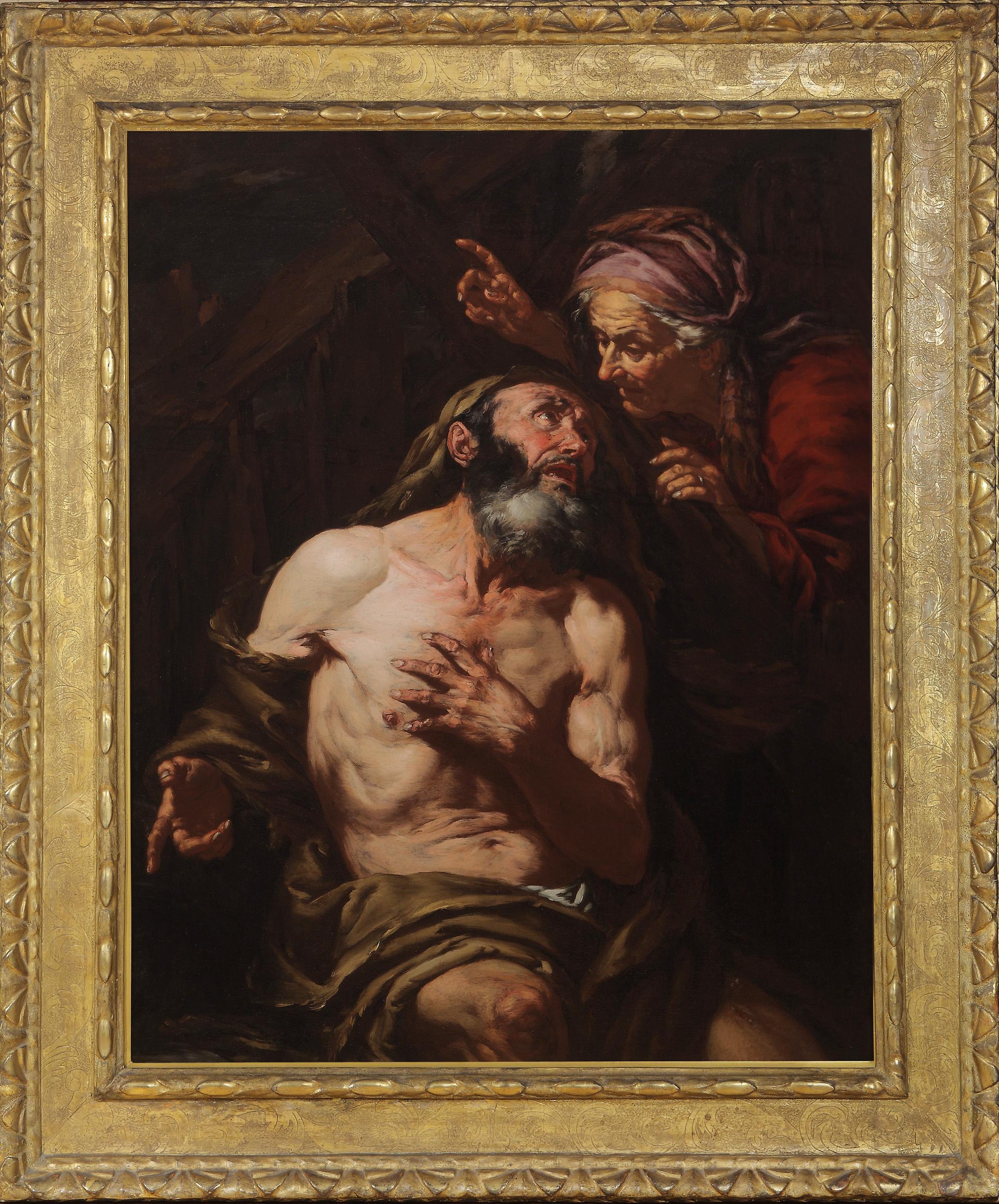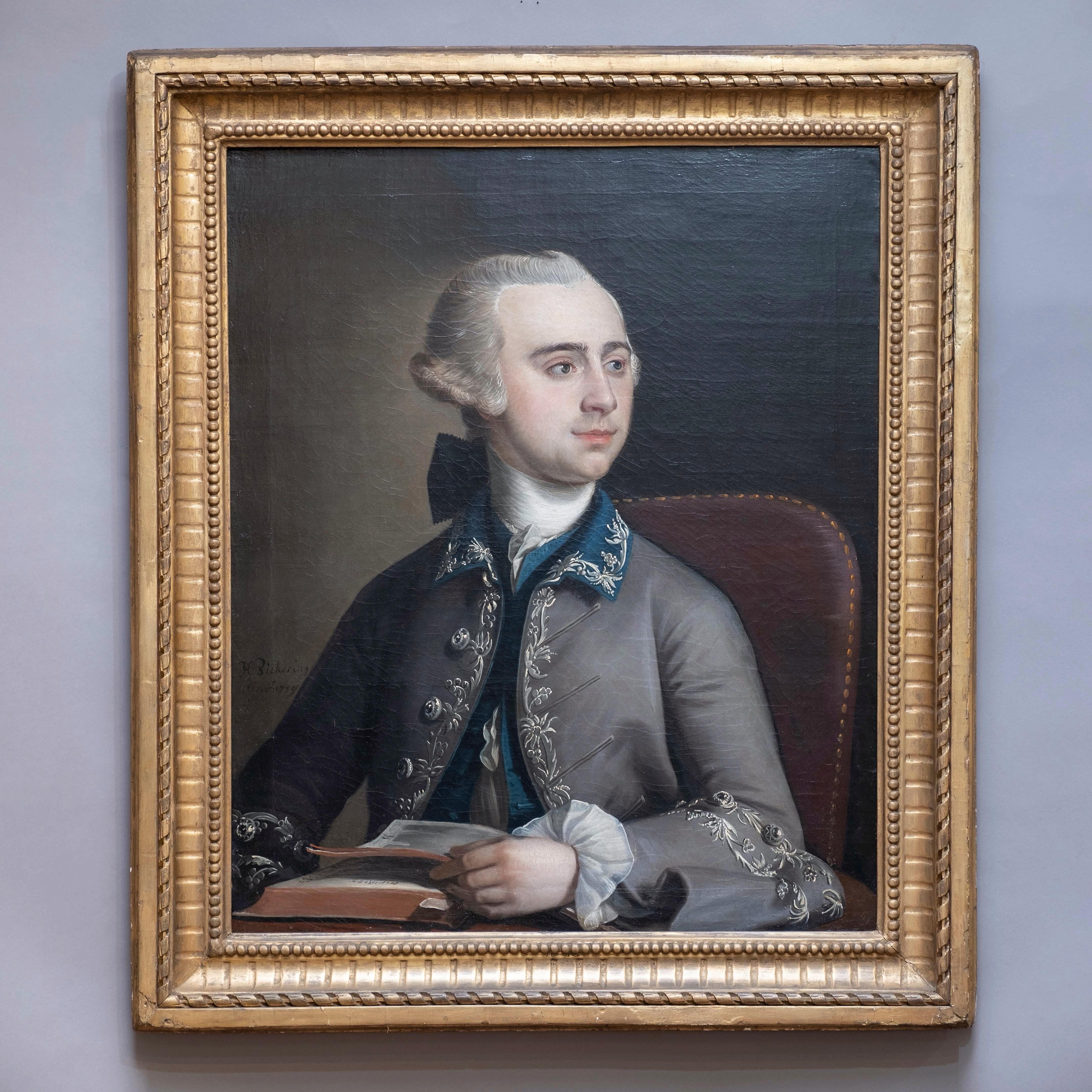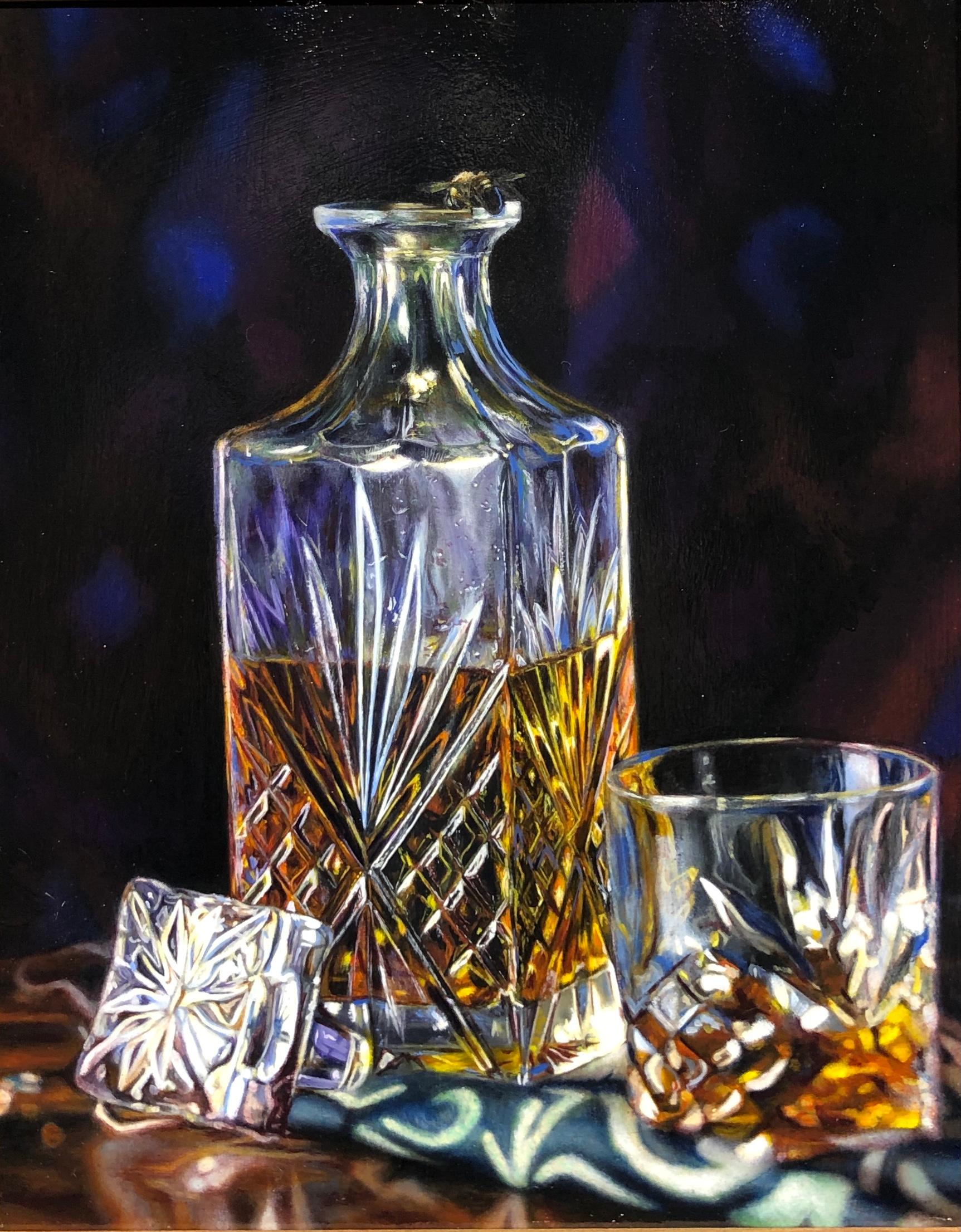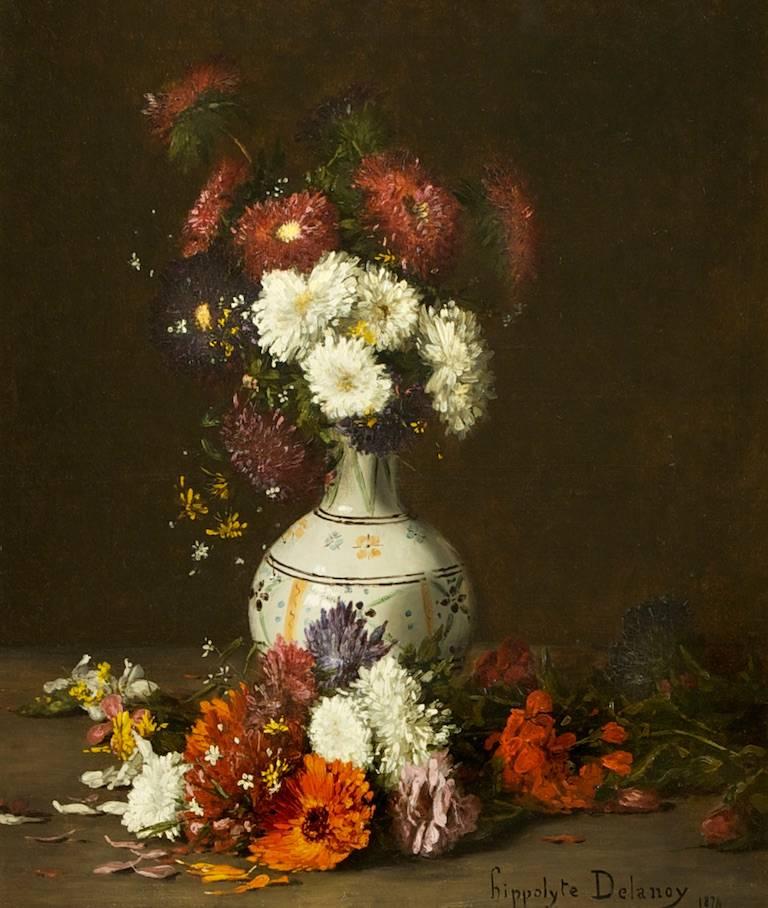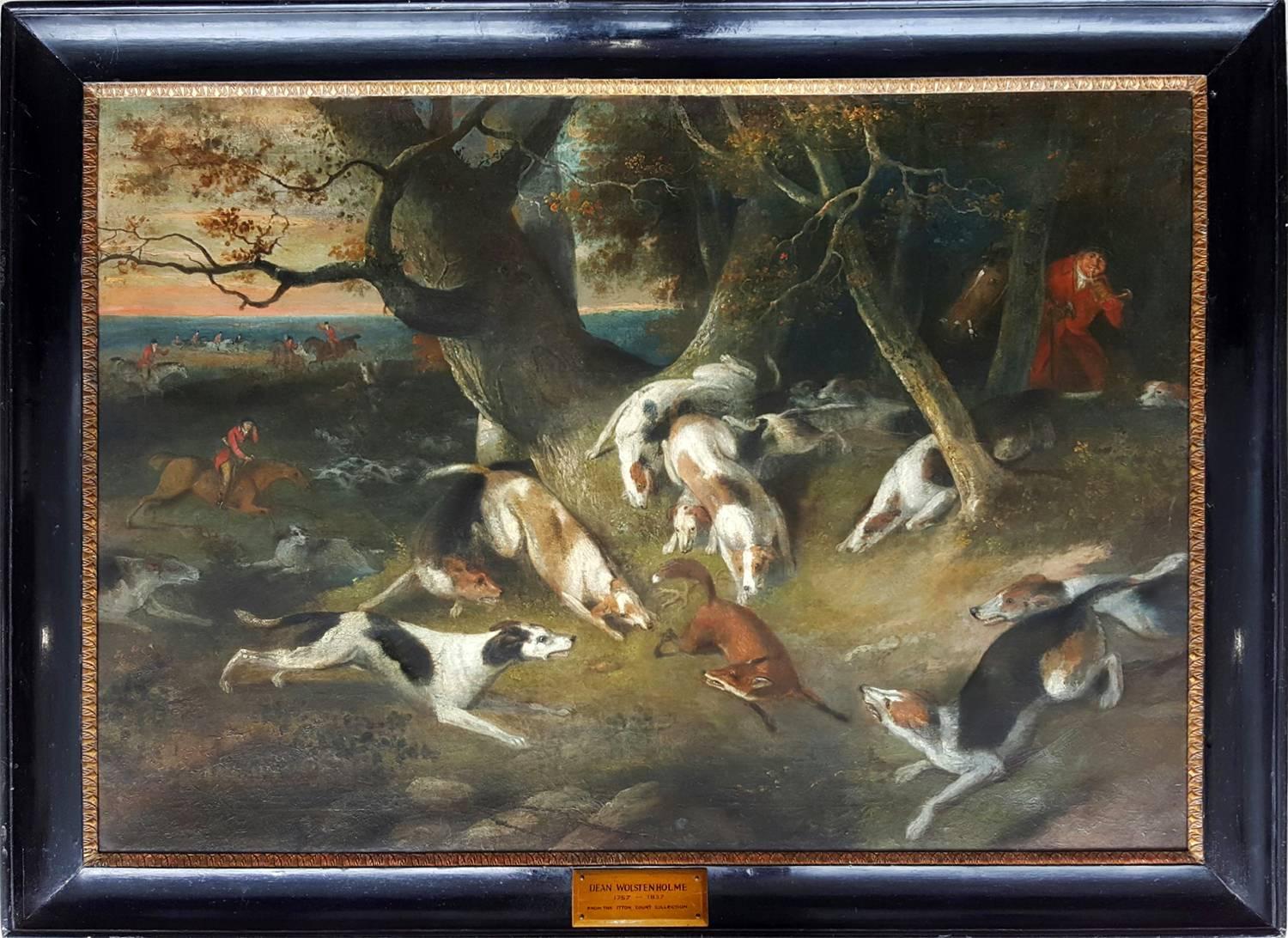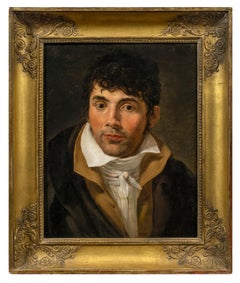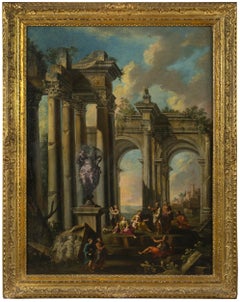Adoration Paint Oil on table 16th century Art Baroque Manierism
View Similar Items
Want more images or videos?
Request additional images or videos from the seller
1 of 14
Frans Francken IIAdoration Paint Oil on table 16th century Art Baroque Manierism
About the Item
- Creator:Frans Francken II (1581 - 1642, Flemish)
- Dimensions:Height: 24.02 in (61 cm)Width: 29.93 in (76 cm)
- Medium:
- Movement & Style:
- Period:
- Condition:
- Gallery Location:Riva del Garda, IT
- Reference Number:1stDibs: LU98814657782
About the Seller
4.8
Platinum Seller
These expertly vetted sellers are 1stDibs' most experienced sellers and are rated highest by our customers.
Established in 2017
1stDibs seller since 2018
200 sales on 1stDibs
More From This SellerView All
- Pietà Cherubs Paint Oil on canvas Religious Rome 16/17th Century MichelangeloLocated in Riva del Garda, ITPeintre actif à Rome au XVIe siècle - entourage de Scipione Pulzone (Gaeta 1550 - Rome 1598) La Pietà (Christ mort soutenu par la Madone) huile sur t...Category
16th Century Old Masters Paintings
MaterialsOil
- Landscape Paint Oil on canvas 18th Century Old master Roma Italy River Water ArtBy Paolo Anesi (Rome 1697 - 1773)Located in Riva del Garda, ITRoman landscape painter of the eighteenth century - Entourage by Paolo Anesi (Rome 1697 - 1773) River landscape of the Lazio countryside, with the Tiber fl...Category
18th Century Old Masters Paintings
MaterialsOil
$5,502 Sale Price20% Off - Ghisolfi Portrait Old master Oil on canvas17th Century Architecture Italy ArtBy Giovani Ghisolfi (Milan 1623-1683)Located in Riva del Garda, ITGiovani Ghisolfi (Milan 1623-1683), attributed / workshop View of classical architectural ruins with Pythagoras pretending to return from Hades Oil on canvas, cm. 70 x 84 In frame c...Category
17th Century Old Masters Paintings
MaterialsOil
$8,508 Sale Price20% Off - Ruins Landscape Codazzi Paint Oil on canvas Old master 18th Century Roma ItalyBy Niccolò Codazzi (Naples, 1642 - Genoa, 1693)Located in Riva del Garda, ITRoman school late 17th - early 18th century - Follower of Niccolò Codazzi (Naples, 1642 - Genoa, 1693) Pair of fantastic architectural whims with class...Category
18th Century Old Masters Landscape Paintings
MaterialsOil
$8,338 Sale Price30% Off - Dughet Woodland Landscape Old master Paint Oil on canvas 17th Century Italy ArtBy Gaspard Dughet, called Gaspard Poussin (Rome 1615 - 1675)Located in Riva del Garda, ITGaspard Dughet, called Gaspard Poussin (Rome 1615 - 1675) - attributable to Wooded landscape of the Roman countryside with the Archangel Raphael and Tobiolo oil painting on canvas second half of the 17th century (cm.) 75 x 98, with frame 91 x 115 On the back old label inscribed "Monte dei Paschi di Siena" The painting has characters clearly linked to the Roman culture of the seventeenth century and, in particular, to the works of Gaspard Dughet, an author who was able to achieve surprising results in describing the Lazio countryside with a unique grace and sensitivity. Brother-in-law of Nicolas Poussin, of whom he was a pupil, Dughet is to be considered among the most important landscape painters of the Roman Baroque, highly sought after and celebrated by the aristocracy, a reference model for the artists of the following generation, such as Crescenzo Onofri, Jan Frans van Bloemen and Andrea Locatelli...Category
17th Century Old Masters Paintings
MaterialsOil
$7,884 Sale Price20% Off - Madonna Child Tiarini Paint Oil on canvas Old master 17th Century Italy BaroqueBy Alessandro Tiarini (Bologna, 1577 - 1668)Located in Riva del Garda, ITEmilian Caravaggesque painter of the early seventeenth century Alessandro Tiarini (Bologna, 1577 - 1668), attributable Madonna and Child Early seve...Category
17th Century Old Masters Paintings
MaterialsOil
$8,962 Sale Price20% Off
You May Also Like
- Job Cursed by His WifeBy Giovanni Battista LangettiLocated in New York, NYProvenance: Alfred (1883-1961) and Hermine Stiassni (1889-1962), Brno, Czech Republic, by 1925; thence London, 1938-1940; thence Los Angeles, 1940-1962; thence by descent to: Susanne Stiassni Martin and Leonard Martin, San Francisco, until 2005; thence by descent to: Private Collection, California Exhibited: Künstlerhaus, Brünn (Brno), 1925, as by Ribera. “Art of Collecting,” Flint Institute of Art, Flint, Michigan, 23 November 2018 – 6 January 2019. Literature: Alte Meister...Category
1670s Old Masters Paintings
MaterialsCanvas, Oil
- Portrait of a GentlemanLocated in New York, NYCircle of Jacques-Louis David (French, 18th Century) Provenance: Private Collection, Buenos Aires Exhibited: “Art of Collecting,” Flint Institute of Art, Flint, Michigan, 23 November 2018 – 6 January 2019. This vibrant portrait of young man was traditionally considered a work by Jacques-Louis David, whose style it recalls, but to whom it cannot be convincingly attributed. Rather, it would appear to be by a painter in his immediate following—an artist likely working in France in the first decade of the nineteenth century. Several names have been proposed as the portrait’s author: François Gérard, Louis Hersent, Anne-Louis Girodet (Fig. 1), Theodore Gericault, and Jean-Baptiste Wicar, among others. Some have thought the artist Italian, and have proposed Andrea Appiani, Gaspare Landi...Category
18th Century Old Masters Paintings
MaterialsCanvas, Oil
$45,000 - An Architectural Capriccio with the Preaching of an ApostleBy Giovanni Paolo PaniniLocated in New York, NYProvenance: Santambrogio Antichità, Milan; sold, 2007 to: Filippo Pernisa, Milan; by whom sold, 2010, to: Private Collection, Melide, Switzerland De Primi Fine Art, Lugano, Switzerland; from whom acquired, 2011 by: Private Collection, Connecticut (2011-present) Literature: Ferdinando Arisi, “Ancora sui dipinti giovanili del Panini,” Strenna Piacentina (Piacenza, 2009): pp. 48, 57, 65, fig. 31, as by Panini Ferdinando Arisi, “Panini o Ghisolfi o Carlieri? A proposito dei dipinti giovanili,” Strenna Piacentina, (Piacenza, 2010), pp. 100, 105, 116, fig. 101, as an early work by Panini, a variant of Panini’s painting in the Museo Cristiano, Esztergom, Hungary. This architectural capriccio is one of the earliest paintings by Giovanni Paolo Panini, the preeminent painter of vedute and capricci in 18th-century Rome. The attribution to Panini has been endorsed by Ferdinando Arisi, and a recent cleaning of the painting revealed the artist’s signature in the lower right. Like many of his fellow painters working in Rome during his day, Panini was not a native of the Eternal City. He first trained as a painter and stage designer in his hometown of Piacenza and moved to Rome at the age of 20 in November 1711 to study figure painting. Panini joined the workshop of Benedetto Luti (1666-1724) and from 1712 was living on the Piazza Farnese. Panini, like many before and after him, was spellbound by Rome and its classical past. He remained in the city for the rest of his career, specializing in depicting Rome’s most important monuments, as well as creating picturesque scenes like this one that evoked the city’s ancient splendor. The 18th century art historian Lione Pascoli, who likely knew Panini personally, records in his 1730 biography of the artist that when Panini came to Rome, he was already “an excellent master and a distinguished painter of perspective, landscape, and architecture.” Panini’s earliest works from this period still show the evidence of his artistic formation in Piacenza, especially the influence of the view painter Giovanni Ghisolfi (1623-1683). However, they were also clearly shaped by his contact in Rome with the architectural capricci of Alberto Carlieri...Category
18th Century Old Masters Figurative Paintings
MaterialsCanvas, Oil
- RED GRAPES, RED WINELocated in Santa Fe, NMRED GRAPES, RED WINE Aleksei Kreydun studied the Old Masters and has revived their long lost techniques, building up multiple layers of oil paint and lacque...Category
Early 2000s Old Masters Still-life Paintings
MaterialsOil
- Head of an AngelLocated in New York, NYProcaccini was born in Bologna, but his family moved to Milan when the artist was eleven years old. His artistic education was evidently familial— from his father Ercole and his elder brothers Camillo and Carlo Antonio, all painters—but his career began as a sculptor, and at an early age: his first known commission, a sculpted saint for the Duomo of Milan, came when he was only seventeen years old. Procaccini’s earliest documented painting, the Pietà for the Church of Santa Maria presso San Celso in Milan, was completed by 1604. By this time the artist had made the trip to Parma recorded by his biographers, where he studied Correggio, Mazzola Bedoli, and especially Parmigianino; reflections of their work are apparent throughout Procaccini's career. As Dr. Hugh Brigstocke has recently indicated, the present oil sketch is preparatory for the figure of the angel seen between the heads of the Virgin and St. Charles Borrommeo in Procaccini's altarpiece in the Church of Santa Afra in Brescia (ill. in Il Seicento Lombardo; Catalogo dei dipinti e delle sculture, exh. cat. Milan 1973, no. 98, pl. 113). As such it is the only known oil sketch of Procaccini's that can be directly connected with an extant altarpiece. The finished canvas, The Virgin and Child with Saints Charles Borrommeo and Latino with Angels, remains in the church for which it was painted; it is one of the most significant works of Procaccini's maturity and is generally dated after the artist's trip to Genoa in 1618. The Head of an Angel is an immediate study, no doubt taken from life, but one stylistically suffused with strong echoes of Correggio and Leonardo. Luigi Lanzi, writing of the completed altarpiece in 1796, specifically commented on Procaccini's indebtedness to Correggio (as well as the expressions of the angels) here: “Di Giulio Cesare...Category
17th Century Old Masters Figurative Paintings
MaterialsCanvas, Paper, Oil
- Charles Jervas, Portrait of Joseph MellishBy Charles JervasLocated in London, GBCharles Jervas (1675-1739) Portrait of Joseph Mellish (1675-1733) Oil on canvas; held in a carved period frame Dimensions refer to size of frame. Provenance: Blyth Hall, Nottinghamshire, England; by descent to Sir Andrew Buchanan of Hodsock Priory, Nottinghamshire In 1635 John Mellish, a merchant tailor of London, bought the estate of Blyth in Nottinghamshire. His son, a wealthy Oporto merchant, dying unmarried, left Blyth in 1703 to a cousin, Joseph Mellish, who became one of Newcastle’s earliest and most important political supporters in the county. He went up to Clare College, Cambridge in 1692 and on to the Inner Temple the following year. He married Dorothea Gore, daughter of Sir William Gore...Category
Early 18th Century Old Masters Portrait Paintings
MaterialsOil
Recently Viewed
View AllMore Ways To Browse
Mens Executive Watches
Gold Roles Watch Men
Asian Wise Men
Carrier Watch
Child Sacrifice
17th Century Adoration Of The Magi
Frans Francken
William Steeple Davis
Oluwole Omofemi
School Map Linen
Mcm Watercolor
Kahn Antiques
Afro Mexican
Ibis Egyptian
Antique Painting Chicken In Landscape
Rudy Burckhardt
Randall Lake
Curvilinear Lines Art White
